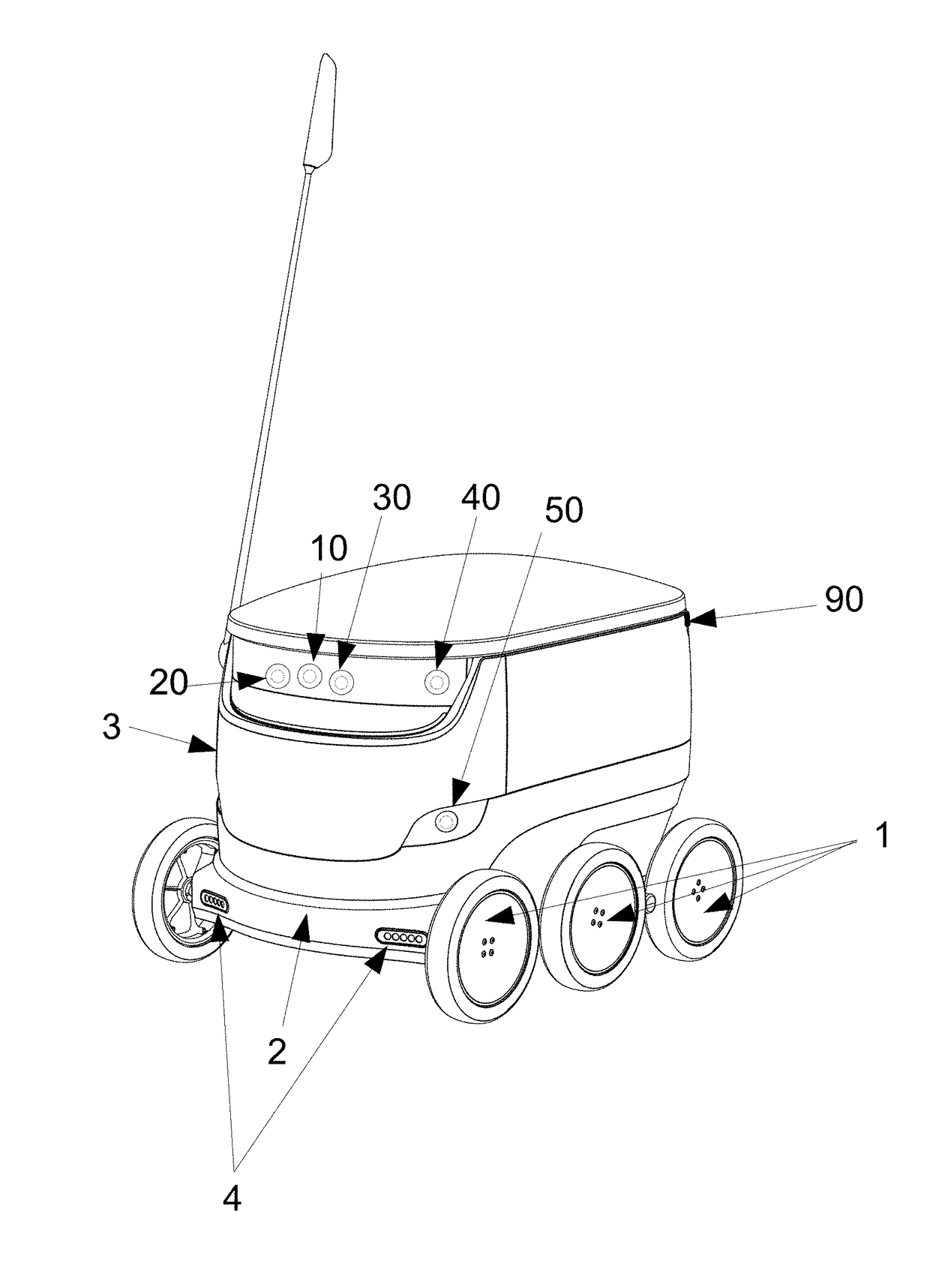Mobile robot system and method for generating map data using straight lines extracted from visual images
a robot and visual image technology, applied in image enhancement, navigation instruments, instruments, etc., can solve the problems of increasing the difficulty of localization outside, in unstructured environments such as cities, suburbs and/or villages, and the accuracy of publicly available maps for autonomous motion by robots is not high, so as to increase the probability of obtaining parameters and improve the robustness of an optimization algorithm.
- Summary
- Abstract
- Description
- Claims
- Application Information
AI Technical Summary
Benefits of technology
Problems solved by technology
Method used
Image
Examples
Embodiment Construction
[0115]In the following, exemplary embodiments of the invention will be described, referring to the figures. These examples are provided to provide further understanding of the invention, without limiting its scope.
[0116]In the following description, a series of features and / or steps are described. The skilled person will appreciate that unless required by the context, the order of features and steps is not critical for the resulting configuration and its effect. Further, it will be apparent to the skilled person that irrespective of the order of features and steps, the presence or absence of time delay between steps, can be present between some or all of the described steps.
[0117]FIG. 1 shows an embodiment of the robot according to the invention. The robot comprises wheels 1 adapted for land-based motion. Frame 2 can be mounted on the wheels 1. Body 3 can be mounted on the frame 2. Body 3 can comprise an enclosed space (not shown) adapted to transport a delivery. Lights 4 can be pla...
PUM
 Login to View More
Login to View More Abstract
Description
Claims
Application Information
 Login to View More
Login to View More - R&D
- Intellectual Property
- Life Sciences
- Materials
- Tech Scout
- Unparalleled Data Quality
- Higher Quality Content
- 60% Fewer Hallucinations
Browse by: Latest US Patents, China's latest patents, Technical Efficacy Thesaurus, Application Domain, Technology Topic, Popular Technical Reports.
© 2025 PatSnap. All rights reserved.Legal|Privacy policy|Modern Slavery Act Transparency Statement|Sitemap|About US| Contact US: help@patsnap.com



